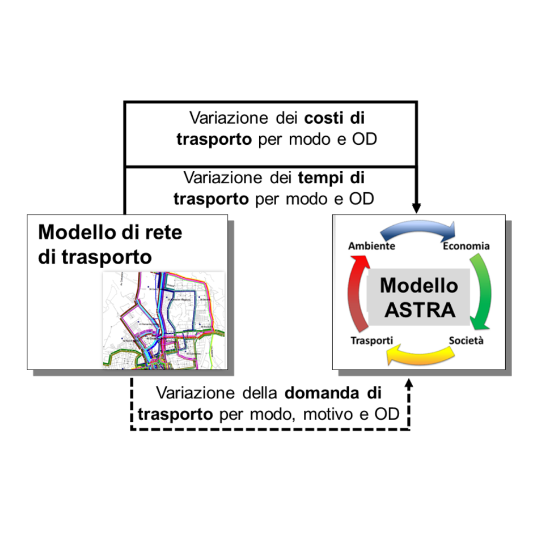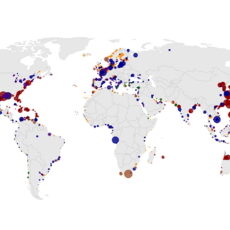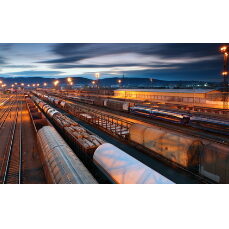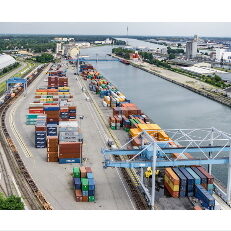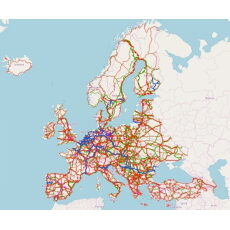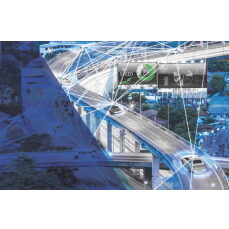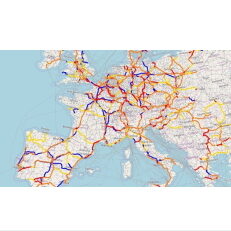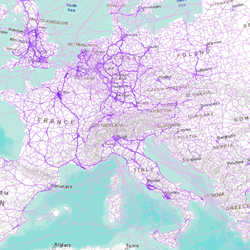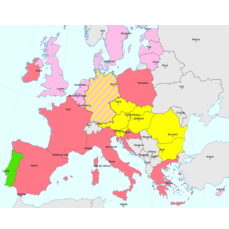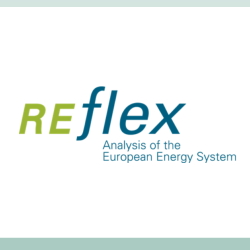Since its first developments ASTRA has been successfully used in several studies on behalf of European Commission and other European institutions
- ASTRA-ЕС model update and improved interaction with multimodal network assignment tools ASTRA is an integrated strategic model employed for policy assessment in the transport and energy field. The model is based on the System Dynamics approach and built in Vensim; it simulates the interaction between the transportation system and the environmental and economy modules. It is developed by TRT and used for several years by the Joint Research Center of the European Commission. TRT supported the use of ASTRA by JRC in two studies: http://www.astra-model.eu/
- Study on cross-border investment needs and climate adaptation of the TEN-T network The effective implementation of the TEN-T policy, with the completion of the core network and the extended network by 2030 and 2040, is key to creating a competitive industry, expanding the labour market, promoting growth and jobs and improve the daily lives of European citizens. It is therefore important to ensure sufficient investment for the completion of the TEN-T network. While it is important to complete the TEN-T, it is equally important to ensure that the infrastructure resists the threats of extreme events resulting from climate change, which will continue to increase in frequency, intensity, duration and spatial extent in the coming decades. The objectives of this study are: 1) identify the investments necessary to make the TEN-T resilient to climate change, 2) identify the investments necessary to remove the cross-border bottlenecks of the TEN-T and ensure its completion. In the study conducted together with M-FIVE (DE), VUB (BE) and ISL (DE), TRT is responsible for: Analyse and quantify the investments necessary for the completion of the TEN-T network until 2040, with particular focus on 43 cross-border projects and 33 national projects. Carry out an assessment of the economic and transport impacts resulting from the non-completion of cross-border projects with the support of two European-scale models TRUST and ASTRA. Analyse the role of CEF (Connecting Europe Facility) funds as a stimulus to the implementation of cross-border projects.
- Impact assessment on measures to better manage and coordinate international rail traffic, including through revised rules for capacity allocation and infrastructure charging in rail The impact assessment study is intended to provide evidence-based support for developing a new initiative implementing: Action 19: Measures to better manage and coordinate international rail traffic, including – if necessary – through revised rules for capacity allocation and infrastructure charging in rail Action 24: EU 2021 Rail Corridor Initiative – Revise the Rail Freight Corridor Regulation of the European Commission’s Smart Mobility Strategy (COM/2020/789 final) for achieving the objectives of the EU Green Deal (COM/2019/640 final). In the Green Deal and the Strategy vision for the future EU transport system, a substantial part of the 75% of inland freight carried today by road should shift onto rail and inland waterways. Moreover, rail freight traffic is projected to increase by 50% by 2030 and double by 2050; by 2030, rail and waterborne-based intermodal transport will be able to compete on equal footing with road-only transport in the EU.
- Impact assessment support study for the new proposal addressing the development of multimodal digital mobility services and a cost-benefit analysis for the revision of Delegated Regulation (EU) 2017/1926 on multimodal travel information services Maximising multimodality and intermodality in passenger mobility is a key element in reducing transport’s contribution to climate change while ensuring that transport systems operate efficiently, both within Member States and also across the EU’s internal borders. Multimodal digital mobility services (MDMS) are, in turn, crucial to foster multimodality as they promote comparability, transparency, and the selling of products across operators and modes. MDMS bring direct benefits to users: they help people to navigate and access an increasingly complex and diverse range of transport offerings, including a range of shared mobility services, as well as to understand the role and benefits of active modes, that will help them meet their mobility needs in different, more sustainable ways. This can also help to increase accessibility more generally, and so help to reduce social exclusion, by enabling those most in need to access the mobility services that enable them to participate more fully in society. Services that support multimodal transport also help to make transport more efficient and sustainable by increasing the utilisation of the various transport services, improving their operation, and nudging users towards the more sustainable options. The study is crucial in informing the scope and focus of the actions that are necessary at the EU level to ensure that MDMS can fully contribute to the aims of the Smart Mobility Strategy and the Green Deal and, more importantly, bring their associated benefits to users and the environment.
- Analysis accompanying the Impact Assessment for the revision of Directive 92/106/EEC (Combined Transport Directive) The project aims to provide a robust evidence-based analysis to develop an impact assessment on the possible revision of the Combined Transport Directive. The objective of the revision is to increase the share of rail, SSS and IWW in the EU freight transport, reducing GHG emissions as well as other transport externalities such as congestion and accidents. The impact assessment should inform the specific measures to be included and the level of ambition of the revised Directive, including the following tasks: Task 1: analysis of the main problems and policy objectives identified by the Commission Task 2: Assessment of the policy measures according to their legal, political and technical feasibility Task 3: Analysis of the baseline scenario, including both the status-quo and the likely evolution of the problem drivers Task 4: Assessment of the economic, social and environmental impacts of each policy option Task 5 and 6: comparison of options and selection of the preferred policy options TRT is involved mainly in Task 3 and 4, providing among others EU scale modelling (ASTRA) for estimations of key variables (transport activity, modal share, fuel consumption, emissions, etc.) for the baseline and policy scenarios, and tailored cost models to quantify the economic impacts of the proposed measures and combination of measures.
- Impact assessment for the revision of regulation (eu) n° 1315/2013 on union guide-lines for the development of the trans-european transport network The European Union with the Green Deal (proposal EC COM(2019) 640 final) has agreed to implement the Paris Climate Agreement leading the EU towards climate neutrality in 2050. In a more detailed communication in 2020 the European Commission proposed to step-up the climate policy ambition for 2030 and reduce GHG emissions of the EU by 55% compared to 1990 (EC COM(2020) 562). For the transport sector the EC published a new smart and sustainable mobility strategy in December 2020 (EC COM(2020) 789) presenting the strategic policy framework that would deliver the GHG reductions required by the transport sector for 2030 and until 2050. As part of this highly dynamic policy framework the EC has foreseen the revision of several existing transport regulations. The revision of the TEN-T guidelines is one of the major transport related policies besides the revision of the Alternative Fuels Infrastructure and the Intelligent Transport System directives and the planned revision of the Rail Freight Corridors regulation. This study carries out the analysis accompanying the impact assessment for the revision of Regulation (EU) N° 1315/2013 on Union Guidelines for the development of the trans-European transport network. Supported by two European scale modelling tools ASTRA and TRUST, the study provides the assessment of three alternative policy options in terms of their transport, economic, social and environmental impacts and identifies the most promising one. The report is available on the website of the “Publications Office of the European Union” at this link.
- Study on exploring the possible employment implications of connected and automated driving The European Commission has commissioned a study focused on getting a better understanding of the impacts on work and employment in the transport sector resulting from the introduction of vehicles with connected and autonomous driving (CAD). The study is aimed at supporting the development of adequate policies to promptly mitigate any negative impacts. Part of a consortium led by Ecorys (NL) and participated by M-Five (DE), VTT (FI), SEURECO (FR), ERTICO, IRU and UITP, TRT is in charge of the design and development of 4 explorative scenarios that consider different levels of penetration of CAD vehicles for the evaluation of the consequent employment repercussions. The evaluation of the impacts is supported by two modelling tools on a European scale ASTRA and NEMESIS. Scenarios’ creation is supported by the Scenario Model. Developed by TRT in System Dynamics, the Scenario Model considers the main drivers on both the supply and demand sides, which influence the uptake of autonomous driving vehicles. The elements on the supply side concern the technology and the conditions of use of CAD; the elements on the demand side concern requirements, preferences and constraints that guide the choice of modes and means of transport. In addition to supply and demand, a third important aspect considered by the model is the regulation introduced by authorities concerning the use of CAD vehicles in different environments. For more information: The Main Report and its annexes are available for download; A brochure of the report is available too; The findings were also presented during a conference in September 2020, where stakeholders in road transport discussed a potential social roadmap for automation.
- The Impact Assessment study, developed for the European Commission, aims to identify and assess the impacts of policy measures on facilitating the deployment of multimodal ITS services By enabling communication between vehicles, infrastructure and other road users, Cooperative Intelligent Transport Systems (C-ITS) can greatly improve safety and efficiency in road transport. Here is a look at some of the most recent developments in C-ITS and how quickly the technology could change the way we drive and interact with each other in traffic. The wide-scale deployment of Cooperative Intelligent Transport Systems could contribute to delivering several Commission’s objectives for transport, such as those on safety, reduced congestion, enhanced mobility and environmental performance. Together with Ricardo Energy&Environment, TRT supported the Directorate for Mobility and Transport of the European Commission in three different studies over a six year period. In 2020-2021 for the development of an Impact Assessment Support Study for the revision of the Intelligent Transport Systems Directive (2010/40/EU) to support the EC with evidence-based analysis. In 2017-2018 developing the legal framework required to support the widespread deployment of C-ITS services in Europe by 2019: a set of policy options and deployment scenarios were assessed with the European scale modelling tools ASTRA and TRUST for the analysis and comparison of the impacts in terms of economic, environmental and social indicators. In 2015 for the preparation of the Communication strategy and the Action plan for the deployment of C-ITS in Europe, providing the analysis of costs and potential benefits based on different scenarios. To support the analysis, the ASTRA and TRUST models are applied to provide quantitative indicators to evaluate the impacts of various policy options and deployment scenarios. For more information Final report of 2015 study Final report of 2017-2018 study
- The impact of TEN-T completion on growth, jobs and the environment The objective of the study is to quantify the impact of the TEN-T core network implementation until 2030 – as well as the impact of each of the nine core network corridors separately – on European Union growth, jobs and the environment. The assessment is done with the support of two European scale modelling tools ASTRA and TRUST. ASTRA is a System Dynamics model used for assessing the wider economic impacts like indirect and induced changes in employment or value added and economic growth due to the TEN-T investments. TRUST is a transport network model allowing for the assignment of OD matrices at the NUTS3 level for passenger and freight demand which is used to provide the transport quantitative inputs to ASTRA. A set of major economic, environmental and transport indicators is provided for the assessment at EU level as well as at the level of Member States for the base year 2015 and the time horizons 2020, 2025 and 2030. The quantitative indicators are accompanied by qualitative arguments where required to elaborate on the quality of jobs created and the typology of jobs. For more information The impact of TEN-T completion on growth, jobs and the environment. Go to the publication
- Impact assessment accompanying the revision of Eurovignette Directive for Heavy Goods Vehicles charging The “Eurovignette” Directive provides a detailed legal framework for charging heavy goods vehicles (HGVs) for the use of certain roads. Following ex-post evaluations of the current legislative framework, the Commission intends to assess the potential impacts of options for a possible revision of the legislative act. The impact assessment study will help substantiate the specific problems linked to charging of vehicles and to design policy options in this field. TRT supports the quantitatve assessment of the impacts of the policy options through the use of European scale models ASTRA and TRUST.
- Support Study for the Impact Assessment Accompanying the Revision of the Eurovignette Directive (1999/62/EC) The charging of heavy goods vehicles (HGVs) for the use of road infrastructure in Europe is governed by Directive 1999/62/EC (the “Eurovignette” Directive). The Directive aimed to achieve step-wise harmonisation of vehicle taxes and establishment of fair mechanisms of infrastructure charging. The general objective of the proposed revision of Directive 1999/62/EC is to promote financially and environmentally sustainable and socially equitable (road) transport through wider application of the ‘user pays’ and ‘polluter pays’ principles (fair and efficient pricing). This study supported the DG MOVE experts in evaluating the impact of the new Directive analysing several interventions trough three different models: ASTRA (to estimate the impacts on the transport and economy systems), TRUST (to estimate the impacts on the traffic distribution), PRIMES-TREMOVE (to estimate the trend of the vehicle fleet). The model suite covers the entire transport system (e.g. transport activity represented at Member State level, by origin-destination and at link level, technologies and fuels at Member State level, air pollution emissions at Member State and link level and CO2 emissions at Member State level) and its macro-economic impacts. The modelling is complemented by a literature review and stakeholder consultation. Input from stakeholders is gathered via an online public consultation and a targeted consultation (mainly via interviews, with some written contributions) that gathers more detailed views and factual information on the considered policy options. For more information Support Study for the Impact Assessment Accompanying the Revision of the Eurovignette Directive (1999/62/EC), Final Report
- REFLEX, a project funded by the Horizon 2020 EU research program, focused on the analysis of the European Energy System under the Aspects of Flexibility and Technological Progress The core objective of the REFLEX project is to analyse and evaluate the development towards a low-carbon energy system with a focus on flexibility technologies in the EU to support a better system integration of Renewable Energy Sources. The project, lead by University of Dresden (Germany), identifies and assesses the most relevant low-carbon technologies and flexibility options in the mobility, heat and electricity sectors for a sustainable and cost-effective transformation of the European energy system. The analysis is based on a modelling system that considers the full extent to which current and future energy technologies and policies interfere and how they affect the environment and society while considering technological learning of low-carbon and flexibility technologies. In the REFLEX project TRT provides expertise in the analysis of the impact of flexibility and technology options on mobility and transport. Both diffusion of alternative technologies in the vehicle fleet and energy and transport policy measures have been considered to analyse the decarbonisation pathway in the transport sector. To this end, the ASTRA system dynamic strategic model simulates the transport system in linkage with the economy, the environment and the energy systems. It is therefore capable to represent long term impacts of transport policies not only on mobility but also on wider aspects such as economic growth or greenhouse gas emissions. In comparison to all other energy sectors, the transport sector increased its GHG emissions since 1990. These emissions need to be reduced by 2050 by at least 60% relative to 1990. Considering the continuous growth of passenger and freight transport demand, strong and timely responses are required at the policy level. Within the REFLEX project, a reference scenario (Mod-RES) and two ambitious policy scenarios (High-RES) are simulated with the ASTRA model (under consideration of global learning for batteries through coupling with the TE3 model) and flexibility potential provided for the electricity sector. Results indicate that a bundle of complementary measures (boosting transport system energy efficiency, supporting the electrification of road transport and promoting alternative fuels )is required to support and accelerate the transition. For more information Brochure Policy brief on Transport trends in the context of future energy scenarios Paper on Investigating the impact of e-bikes on modal share and greenhouse emissions with the ASTRA model. Detailed techno-economic assessment of low-carbon technologies focusing on flexibility options and applying bottom-up sectoral models and demand projection models of the heat, electricity and transport sector, download deliverable. Application of social environmental life cycle assessment (eLCA and sLCA) to analyse and compare environmental impacts, social risks and external costs due to life cycle-based environmental impacts related to the European energy systems for the three envisaged REFLEX scenarios, download deliverable. Document providing a short but concise overview of the main findings for the different sectors and a bundle of policy recommendations derived thereof. The book “The Future European Energy […]
- ASSIST – ASsessing the Social and economic Impacts of past and future Sustainable Transport policy in Europe The main objective of the ASSIST project (ASSessing the Social and economic Impacts of past and future Sustainable Transport policy in Europe) was to provide the EU with sound policy advice on the possible social and economic impacts of future sustainable transport policies that would contribute to the strategic objectives of the EU given by the Lisbon Strategy, the Sustainable Development Strategy and the EU-2020 strategy. The role of TRT concerned the modelling line, as leader of the development of the new tool in cooperation with the project leader Fraunhofer-ISI (Germany). Other partners are NEA (The Netherlands), ProgTrans (Switzerland), FŐMTERV (Hungary), CNRS-LET (France).

